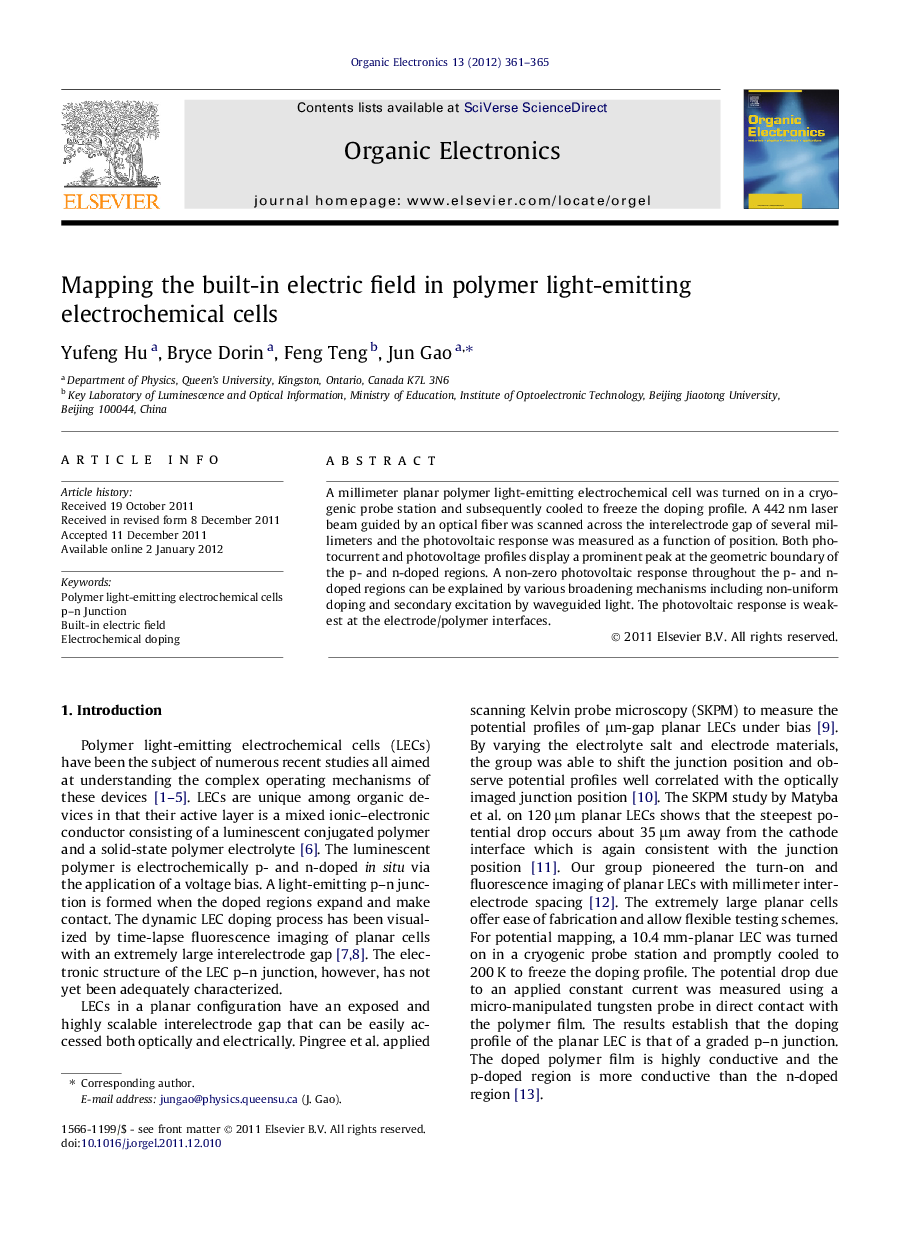| Article ID | Journal | Published Year | Pages | File Type |
|---|---|---|---|---|
| 1267626 | Organic Electronics | 2012 | 5 Pages |
A millimeter planar polymer light-emitting electrochemical cell was turned on in a cryogenic probe station and subsequently cooled to freeze the doping profile. A 442 nm laser beam guided by an optical fiber was scanned across the interelectrode gap of several millimeters and the photovoltaic response was measured as a function of position. Both photocurrent and photovoltage profiles display a prominent peak at the geometric boundary of the p- and n-doped regions. A non-zero photovoltaic response throughout the p- and n-doped regions can be explained by various broadening mechanisms including non-uniform doping and secondary excitation by waveguided light. The photovoltaic response is weakest at the electrode/polymer interfaces.
Graphical abstractFigure optionsDownload full-size imageDownload as PowerPoint slideHighlights► Millimeter planar polymer LECs are turned on and frozen. ► A laser beam creates localized optical excitation and photovoltaic response. ► The built-in electric field is mapped by measuring laser-induced photocurrent. ► The built-in electric field is the highest at the geometric p–n junction.
